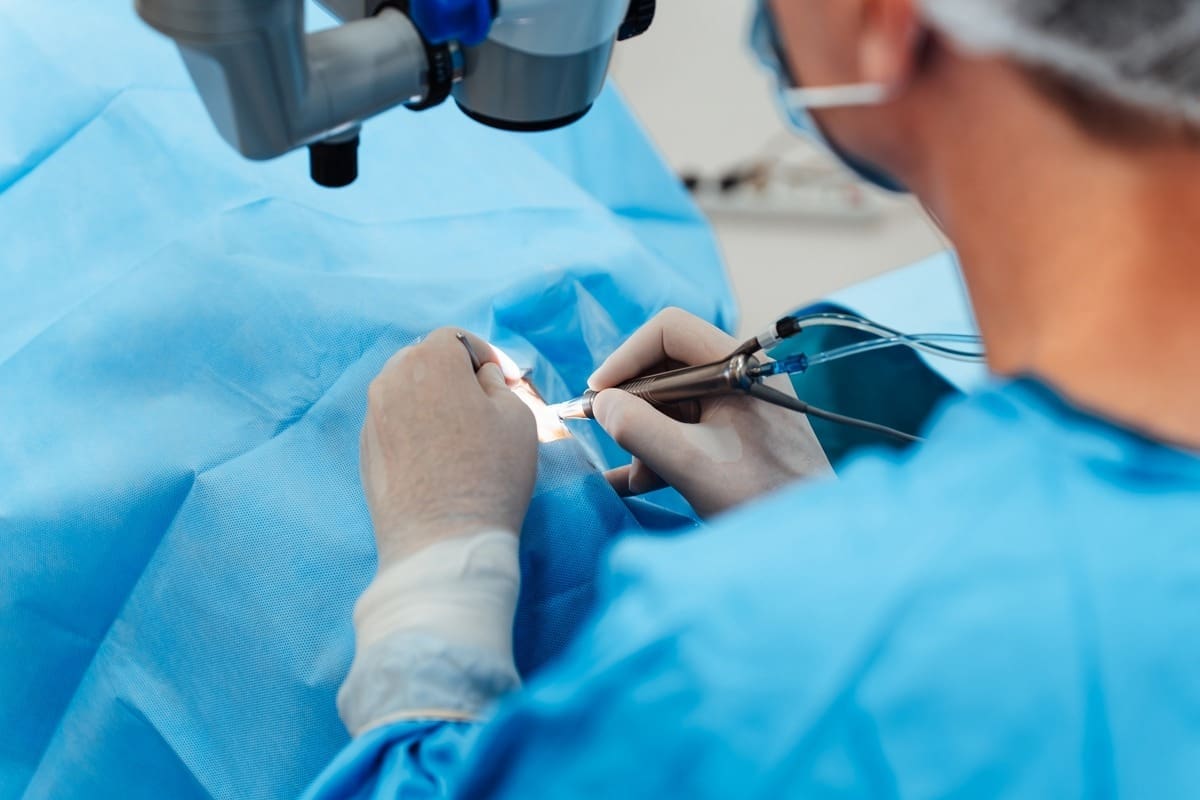Last Updated on November 26, 2025 by Bilal Hasdemir

Cancer patients going through chemotherapy often face uncomfortable symptoms. These are called ‘chemo belly.’ Symptoms include bloating, gas, and stomach pain.
At Liv Hospital, we know how ‘chemotherapy belly’ affects patients’ lives. We offer a full care plan to help manage these symptoms. This way, patients get the support they need.
Recent studies show that chemotherapy can cause lasting stomach problems in over half of cancer survivors. This highlights the importance of tackling ‘chemo belly’ effectively.
Key Takeaways
- Understanding ‘chemo belly’ is key for cancer patients on chemotherapy.
- ‘Chemo belly’ symptoms include bloating, gas, and stomach pain.
- Comprehensive care is vital for managing ‘chemo belly’ symptoms.
- Chemotherapy can cause long-lasting stomach issues.
- Managing ‘chemo belly’ well can greatly improve a patient’s life quality.
Understanding Chemo Belly: What Cancer Patients Need to Know
Many cancer patients face the issue of ‘chemo belly,’ which includes bloating and discomfort in the abdomen. It’s important for patients to know about this to better manage their symptoms during treatment.
Definition and Prevalence Among Cancer Patients
‘Chemo belly’ refers to stomach pain and other digestive issues caused by chemotherapy. These symptoms include bloating, gas, pain, and changes in bowel movements. Many patients experience these problems, making it a common side effect of treatment.
A study in the Journal of Clinical Oncology found that about 70% of patients with chemotherapy face digestive issues. Abdominal bloating is a top complaint. This shows how important it is to find ways to manage these symptoms.
| Symptom | Prevalence |
|---|---|
| Abdominal Bloating | 60% |
| Excessive Gas | 55% |
| Stomach Pain | 45% |
Impact on Quality of Life During and After Treatment
‘Chemo belly’ can greatly affect a patient’s life. It can cause a lack of appetite, nutritional problems, and stress. These issues can make treatment harder. Also, ongoing digestive problems can lead to anxiety and depression.
“The gastrointestinal symptoms associated with chemotherapy can be as debilitating as the cancer itself, affecting patients’ overall well-being and treatment outcomes.”
It’s key to understand the causes and find ways to ease these symptoms. By doing so, we can improve the lives of cancer patients with ‘chemo belly.’ This proactive approach can lead to better care and treatment results.
The 7 Key Symptoms of Chemo Belly
Knowing the symptoms of chemo belly is key for patients and caregivers. Chemo belly is a common side effect for those with cancer. It includes a range of uncomfortable symptoms in the stomach area.
1. Abdominal Bloating and Distension
Abdominal bloating and distension are common symptoms. Fluid or gas builds up in the digestive tract. This causes discomfort and swelling in the stomach.
Patients often feel very full or tight in their stomach.
2. Excessive Gas and Flatulence
Excessive gas and flatulence, or “chemo farts,” are common too. Chemotherapy can change the gut’s bacteria, causing more gas. This can be embarrassing and uncomfortable, affecting daily life.
3. Stomach Pain and Cramping
Stomach pain and cramping are significant symptoms. The pain can be mild or severe. It may get worse with eating or bowel movements.
This discomfort can really affect daily activities and overall health.
4. Changes in Bowel Movements
Changes in bowel movements, like diarrhea or constipation, are also symptoms. Chemotherapy can make bowel movements irregular. It’s important to manage these changes to avoid complications.
The last three symptoms are:
- Nausea and vomiting
- Loss of appetite
- Early satiety
These symptoms can vary in how they affect patients. It’s important to understand and manage them to improve life during cancer treatment.
What Does Chemo Belly Look Like? Visual Guide
‘Chemo belly’ is when the stomach area changes during chemotherapy. These changes can be scary, but knowing what to expect can help patients feel better.
Physical Appearance and Changes
Chemo belly can look different for everyone. It might make the stomach look swollen or bloated. Common signs include:
- Abdominal distension
- Increased girth around the waist
- Tightness in clothing
These signs often come from fluid retention or gas in the stomach. Sometimes, the swelling can be so bad it hurts and makes moving hard.
Differentiating Normal vs. Concerning Symptoms
Some swelling is normal during chemo, but it’s key to know the difference. Look out for:
- Severe pain or cramping
- Vomiting or trouble keeping food down
- Fever or chills
If you see these signs, get help right away. Knowing what to look for can make dealing with chemo easier.
The Science Behind Chemo Belly: How Chemotherapy Affects Your Digestive System
Chemotherapy is a lifesaver but can really mess with your stomach. It leads to “chemo belly,” a mix of symptoms that can make life tough. These symptoms can really affect how well you feel during and after treatment.
To get what “chemo belly” is, we need to look at how chemo affects your stomach. Your stomach is more than just a food path. It’s a complex place with good bugs and a protective lining.
Chemotherapy’s Impact on the Gut Microbiome
Your gut microbiome is key to your health. It helps with absorbing nutrients and keeping your immune system strong. But chemo can mess with this balance, causing bad bugs to grow and good ones to shrink. This can lead to bloating, gas, and changes in how you go to the bathroom, all signs of “chemo belly.”
It’s caused by the imbalance in your gut and how your body reacts to chemo toxins.
Cellular Damage to the Digestive Tract
Chemo goes after fast-growing cells, including those in your stomach lining. This can cause inflammation, ulcers, and make it hard for your stomach to absorb nutrients. You might feel pain, have trouble swallowing, or have changes in your bowel movements. All these can make it hard to get the nutrients you need.
Knowing how chemo affects your stomach is key to managing chemo belly. Doctors can then find ways to lessen these side effects. This can make life better for patients during and after treatment.
How Long Does Chemo Belly Last? Timeline and Expectations
Patients going through chemotherapy often wonder about the timeline of chemo belly. This side effect varies from person to person. It depends on the type of chemotherapy, the patient’s health, and other medications.
Short-Term Effects During Treatment
Chemo belly usually starts a few days to a week after treatment begins. Symptoms include bloating, changes in bowel movements, and discomfort. These can be managed with diet changes and medication.
Medium-Term Recovery Period
After treatment ends, symptoms may slowly get better over weeks to months. The recovery time depends on the patient’s health, the chemotherapy type, and post-treatment care. Nutritional counseling and physical activity can help in recovery.
Long-Term Persistence in Cancer Survivors
Some cancer survivors may have chemo belly symptoms for a long time after treatment. This can be due to changes in the gut microbiome or other chemotherapy effects. Survivors should talk to their healthcare provider about managing these symptoms.
Knowing that chemo belly can last through treatment and sometimes after helps set realistic expectations. Patients can prepare better for these challenges. Working with their healthcare team is key to managing its effects.
Root Causes of Chemo Belly: Why It Happens
Several factors lead to chemo belly in patients getting chemotherapy. Knowing these causes helps manage and ease symptoms.
Direct Effects of Chemotherapy Drugs
Chemotherapy drugs are a main reason for chemo belly. These drugs target fast-growing cancer cells but also harm other fast-growing cells, like those in the digestive tract. This can cause:
- Damage to the stomach and intestines lining
- Disruption of the digestive system’s normal function
- Inflammation and irritation in the gastrointestinal tract
Certain chemotherapy agents can lead to constipation or diarrhea, both parts of chemo belly. The digestive system’s impact can differ based on the chemotherapy type and dosage.
Secondary Factors: Medication, Stress, and Diet
Other factors can make chemo belly worse or contribute to it. These include:
- Medication: Other cancer treatment drugs, like pain relievers and anti-nausea meds, can affect bowel movements and add to chemo belly.
- Stress: The stress of cancer and its treatment can affect digestion and bowel habits.
- Diet: Changes in diet or trouble eating during chemotherapy can also play a role. For more on managing dietary changes during cancer treatment, visit Liv Hospital’s guide on weight loss with ovarian.
Individual Risk Factors
Individual risk factors can also affect the likelihood and severity of chemo belly. These include:
- Pre-existing gastrointestinal conditions
- Age and overall health
- Previous abdominal surgery or radiation therapy
Knowing these risk factors helps healthcare providers create treatment plans to lower the risk of chemo belly.
7 Effective Relief Tips for Managing Chemo Belly
Cancer patients with chemo belly can find relief with practical steps. These steps include changing your diet, staying hydrated, being active, and managing stress. Together, they help improve your life quality.
Dietary Modifications and Nutrition Tips
Changing your diet is key to managing chemo belly. Eat foods that are easy to digest. Stay away from foods high in fiber and fat. Eat smaller meals more often.
- Choose low-fiber foods like white bread and refined grains.
- Avoid foods that cause gas, such as beans and cabbage.
- Opt for lean proteins and cooked vegetables.
Keeping a food diary helps track which foods help or hurt your symptoms.
Hydration and Fluid Management
Drinking enough water is vital for your digestive health. Drink lots of water and clear broths. Avoid caffeinated and carbonated drinks.
| Fluid Type | Recommended Intake |
|---|---|
| Water | At least 8 cups a day |
| Clear Broths | 2-3 cups a day |
| Caffeinated Drinks | Avoid or limit |
Physical Activity and Gentle Exercise
Gentle exercise can help with digestion and chemo belly symptoms. Try walking, yoga, and stretching.
- Start with short walks and gradually increase duration.
- Practice gentle yoga poses that aid digestion.
- Engage in stretching exercises to relieve abdominal tension.
Stress Reduction Techniques
Stress can make chemo belly symptoms worse. Try meditation, deep breathing, and progressive muscle relaxation to reduce stress.
By using these tips, patients can manage chemo belly better. This improves their life quality during and after chemotherapy.
The Emotional Impact of Chemo Belly: Coping Strategies
Changes in the body from chemotherapy, like ‘chemo belly,’ can make people feel anxious and depressed. These physical changes can really affect how patients feel about themselves. It can make their life quality go down.
Psychological Effects of Body Changes
The changes from ‘chemo belly,’ like bloating and shape changes, can deeply affect the mind. Patients might feel:
- Body image issues
- Reduced self-esteem
- Anxiety about appearance
- Fear of social stigma
One patient shared,
“The change in my body was like a constant reminder of my illness, making it hard to cope.”
These feelings can be very strong. They might need help from professionals to deal with.
Support Systems and Resources
But, there are many ways to get help with these feelings. There are:
- Professional counseling services
- Support groups for cancer patients
- Online forums and communities
- Mindfulness and relaxation techniques
It’s important for patients to know they’re not alone. Using these resources can help manage the emotional side of ‘chemo belly.’ It can also improve their overall health.
We believe in caring for the whole person, not just the body. We aim to support both the physical and emotional needs of our patients. This way, we can help them through their treatment journey.
Advanced Treatment Options for Persistent Chemo Belly
For those dealing with ongoing chemo belly, there are advanced treatments available. These options aim to ease symptoms and enhance life quality for those with cancer undergoing chemo.
Specialized Gastrointestinal Interventions
Specialized treatments for the stomach and intestines are key in fighting chemo belly. These may include:
- Gastrointestinal motility testing to check how food moves through the digestive system.
- Nutritional counseling to help patients get the nutrients they need, even with digestive issues.
- Medication management to reduce symptoms like nausea, bloating, and stomach pain.
Liv Hospital’s Innovative Approach
Liv Hospital leads in tackling chemotherapy side effects, including chemo belly. Their approach is innovative and includes:
| Treatment Aspect | Description | Benefit |
|---|---|---|
| Multidisciplinary Care Team | A team of oncologists, gastroenterologists, and nutritionists work together to create personalized treatment plans. | Comprehensive care addressing all aspects of chemo belly. |
| Advanced Diagnostic Tools | State-of-the-art diagnostic equipment to accurately assess gastrointestinal issues. | Precise diagnosis leading to targeted treatment. |
| Patient Support Programs | Programs designed to support patients emotionally and practically throughout their treatment journey. | Improved patient well-being and treatment adherence. |
Liv Hospital offers advanced treatments and all-around care. This shows their dedication to bettering the lives of cancer patients with chemo belly.
Conclusion: Living Well Despite Chemo Belly
Managing ‘chemo belly’ is key to better living for cancer patients on chemo. We’ve looked at symptoms, causes, and ways to feel better. This helps patients deal with this tough condition.
To live well with chemo belly, a full care plan is needed. Knowing the causes and using good management tips can help. Eating right, staying hydrated, exercising, and reducing stress are important steps.
Every patient’s situation is different. It’s best for them to work with their doctors to make a plan that fits. With the right help, patients can handle chemo belly and enjoy a better life.
Places like Liv Hospital are finding new ways to handle chemo side effects. They offer top-notch care and support. This helps patients take charge of their symptoms.
Being proactive and informed about chemo belly management can make a big difference. It lets patients focus on getting better. We’re here to support and guide patients to live well, even with chemo belly.
FAQ
What is chemo belly?
Chemo belly is when some cancer patients feel bloated and uncomfortable in their stomach during or after chemotherapy.
What are the symptoms of chemo belly?
Symptoms include feeling bloated, having too much gas, stomach pain, and changes in bowel movements. People also feel discomfort in their stomach.
How long does chemo belly last?
Chemo belly can last different lengths of time. It might happen during treatment, last during recovery, or even stay long after treatment ends.
What causes chemo belly?
Chemo belly is caused by chemotherapy’s effects on the stomach. It damages the gut microbiome and the stomach lining. Other factors like medication, stress, and diet also play a role.
How can I manage chemo belly?
To manage chemo belly, try eating smaller meals, drinking plenty of water, and staying active. Reducing stress and using special stomach treatments can also help.
Can chemo belly be prevented?
While you can’t completely prevent chemo belly, you can lessen its severity. Eat well, drink lots of water, manage stress, and follow relief tips.
Is chemo belly a sign of cancer recurrence?
Chemo belly itself doesn’t mean cancer is coming back. But, if you have ongoing or severe stomach problems, talk to your doctor to check for other issues.
How does chemotherapy affect the gut microbiome?
Chemotherapy can upset the balance of good and bad bacteria in the gut. This can lead to digestive problems and symptoms of chemo belly.
What are some dietary recommendations for managing chemo belly?
To help with chemo belly, eat smaller meals more often. Avoid foods that make gas. Choose foods that are easy to digest.
Are there any advanced treatment options for persistent chemo belly?
Yes, for ongoing chemo belly, there are advanced treatments. These include special stomach treatments and new approaches from places like Liv Hospital.
How can I cope with the emotional impact of chemo belly?
To deal with the emotional side of chemo belly, get support from doctors, support groups, and loved ones. Use stress-reducing techniques and other coping methods.







